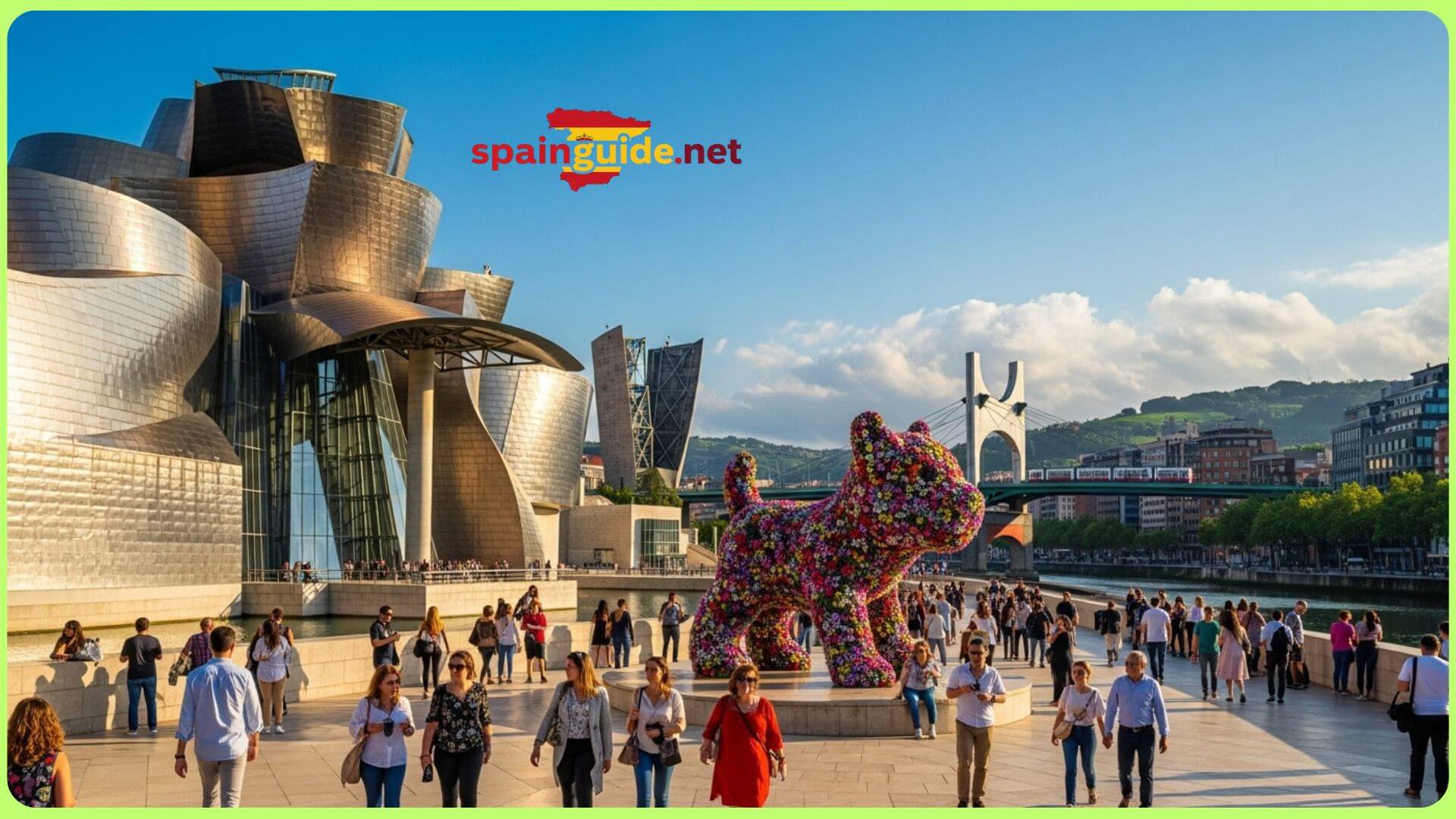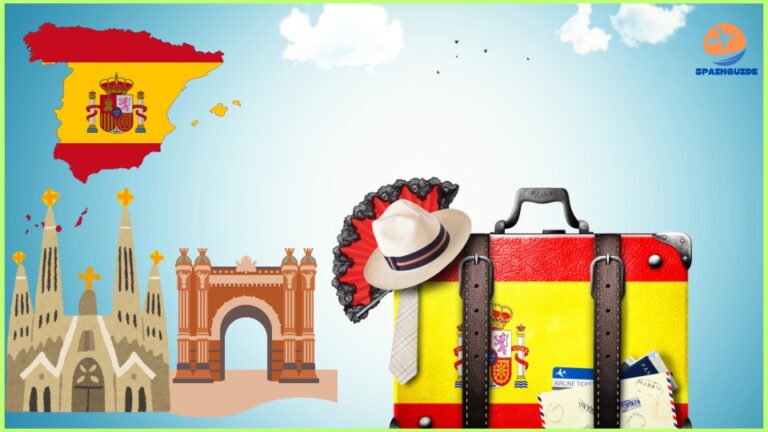Here’s the thing — when you think of Spain, I’m sure most people think of the beach in Barcelona or the museums in Madrid. But what about Bilbao? This northern city of Spain is arguably Europe’s best-kept secret, and honestly, it could be the most interesting destination on the continent right now. You are talking about a city that went from a run-down industrial port to an architecturally beautiful space in less than 30 years. It has a plethora of world-class art, food that will blow your mind, gorgeous coastlines, and a Basque culture that is unique. Allow me to provide you with reasons that will convince you that this is a place to be at the top of your list while traveling in Europe.
Where Is Bilbao and What Makes It Special
Bilbao sits in Spain’s Basque Country, right in the north along the Bay of Biscay. It’s surrounded by green hills and straddles the Nervión River, which flows straight through the city center. The location’s already gorgeous, but what really sets Bilbao apart is how it blends hardcore Basque culture with cutting-edge modern design.
The Basque people have their own language, traditions, and honestly, their own way of doing everything—including food, which we’ll get to. While other Spanish cities feel Spanish, Bilbao feels Basque, and that distinction matters. Plus, unlike Barcelona or Madrid, where everyone speaks some English, here you’re genuinely immersed in something different.
Architectural Wonders That Changed Everything
Let’s talk about the elephant—or should I say, the titanium spaceship—in the room. The Guggenheim Museum Bilbao opened in 1997 and literally changed how cities think about architecture and urban renewal. Frank Gehry designed this insane building covered in titanium that looks like a ship, a fish, or maybe an artichoke, depending on who you ask. The whole concept is so influential that they call it “the Bilbao Effect”—when a single architectural icon transforms an entire city.
But the Guggenheim’s just the beginning. Walk around and you’ll see the Zubizuri Bridge (another Gehry creation that looks like it’s made of sailcloth), the Isozaki Towers (twin glass towers that light up at night), and Azkuna Zentroa—a renovated wine warehouse with Philippe Starck’s 43 unique support columns. Every corner has something that makes you stop and stare.
The craziest part? Bilbao’s transformation from industrial wasteland to architectural showcase happened in just a couple of decades. Where there used to be shipyards and steel mills, there are now parks, pedestrian bridges, and museums. It’s urban planning done right.
Art and Culture That’s World-Class
Obviously, the Guggenheim is the star here. General admission runs about €18, and it’s open Tuesday through Sunday from 10 AM to 7 PM (daily with extended hours in summer). Inside, you’ve got Richard Serra’s “The Matter of Time,” Jeff Koons’ giant “Puppy” sculpture outside (covered in actual flowers), and rotating exhibitions featuring artists like Refik Anadol and Barbara Kruger through 2025.
But don’t sleep on the Bilbao Fine Arts Museum—it’s got an impressive collection spanning seven centuries and way fewer tourists. There’s also incredible street art throughout Casco Viejo, and the city hosts major festivals like Aste Nagusia in August (nine days of concerts, parades, and Basque celebrations) and Bilbao BBK Live, one of Europe’s top music festivals.
The city recorded over 1.2 million visitors in 2024, with international tourists (52%) now outnumbering domestic ones for the first time ever. That tells you something’s working.
Food That’ll Ruin You for Other Cities
Alright, buckle up—Bilbao’s food scene is absolutely ridiculous. The city’s built around pintxos culture (the Basque version of tapas), and it’s an art form here. You bar hop through Casco Viejo, grabbing a pintxo and a drink at each spot. It’s social, it’s delicious, and it’s how locals actually eat.
Must-visit pintxo bars include Bar Charly (been around since 1973 and still killing it), Víctor Montes (operating since 1849—yes, you read that right), Gure Toki, and El Globo. Expect to pay a few euros per pintxo, and don’t be afraid to point if you don’t know the names.
But if you want to go fancy, you’re only about 10km from Azurmendi in nearby Larrabetzu—a three-Michelin-star restaurant run by chef Eneko Atxa. It’s consistently ranked among the world’s best restaurants and is famous for its sustainability practices. They’ve got a 900-label wine list, geothermal energy systems, and a multi-space dining experience that starts with a picnic in the lobby. Yeah, it’s extra, but it’s worth it.
The Basque Country also produces txakoli (a slightly sparkling local white wine) and has strong cider traditions. Basically, you won’t go hungry or thirsty here.
Nature and Coastal Beauty
Here’s what most people don’t realize—Bilbao’s about 30 minutes from some of Spain’s most dramatic coastline. San Juan de Gaztelugatxe is probably the most famous, a rocky islet connected to the mainland by a 241-step stone bridge. There’s a hermitage at the top, and Game of Thrones fans might recognize it as Dragonstone. The views over the Bay of Biscay are absolutely mental.
Day trips to Gaztelugatxe usually include stops in Bermeo (a traditional fishing village) and Guernica (famous for Picasso’s painting about the Civil War bombing). You can also explore the Urdaibai Biosphere Reserve, hike in the surrounding green hills, or just cruise along the Basque coast.
The balance between urban sophistication and natural beauty is perfect. You can hit world-class museums in the morning and be hiking seaside cliffs by afternoon.
Sustainable and Walkable
Bilbao’s seriously committed to sustainability, ranking seventh globally and first in Spain on the Global Destination Sustainability Index—a huge jump from 42nd position just a few years ago. The city’s invested heavily in green spaces, sustainable tourism practices, and eco-friendly infrastructure.
The metro and tram system is efficient and modern, the city center is super walkable (most people prefer walking to driving), and there are bike-share programs everywhere. The Guggenheim was even the first museum worldwide to certify its carbon footprint, including indirect emissions.
After decades of industrial pollution, Bilbao’s cleaned up the Nervión River, created parks along its banks, and built pedestrian bridges connecting both sides. The transformation’s not just aesthetic—it’s environmental.
Easy to Get There and Around
Bilbao Airport (BIO) has international connections throughout Europe and beyond. From there, the metro takes about 40 minutes to the city center and costs around €3. The public transport system uses a rechargeable Barik card that works on the metro, tram, and buses.
The city’s also a perfect base for exploring northern Spain. San Sebastián’s an hour away, you can hit Rioja wine country in under two hours, and Cantabria’s coastline is right there. Bilbao’s basically the gateway to Spain’s entire north coast.
When to Visit Bilbao
Spring (April-May) and fall (September-October) are your best bets—mild temps around 13-22°C, fewer crowds, and great weather for exploring both the city and coast. Summer (June-August) is the warmest (averaging 25°C) but gets packed, especially during Aste Nagusia in mid-August.
Aste Nagusia 2025 runs August 16-24, with over 100 free concerts, traditional Basque dancing, sporting competitions, and the iconic Marijaia figure (she’s raised at the start and burned at the end). If you’re into festivals, this is the time to go—just book everything way in advance.
Winter’s mild (around 10°C) with occasional rain, but way less touristy and cheaper. Plus, the Christmas lights are legitimately charming.
Must-Do Experiences
Guggenheim Museum: Obvious, but essential. Spend at least two hours exploring both the building and the art inside.
Casco Viejo pintxo crawl: Hit 4-5 bars in the Old Town, sampling different pintxos with local wine or cider. This is Bilbao’s soul.
Mercado de la Ribera: One of Europe’s largest covered markets. Great for fresh produce, local products, and soaking up everyday Bilbao life.
Mount Artxanda: Take the funicular up for panoramic city views. Legend says Gehry spotted the Guggenheim’s location from up here.
San Juan de Gaztelugatxe day trip: Book a guided tour (around €76 for 6 hours) that includes Bermeo and Guernica.
Bilbao Fine Arts Museum: Often overlooked, but it houses incredible Spanish art from medieval to contemporary.
Zubizuri Bridge sunset: Walk across at sunset when the titanium buildings glow.
Where to Stay
Casco Viejo is perfect if you want to be in the heart of pintxo action—lots of budget hostels and boutique options.
Abando (near the Guggenheim) has modern luxury hotels and easy metro access. It’s walkable to most major sights.
Indautxu is more residential and local, with good value accommodations and authentic neighborhood vibes.
Book ahead for August (Aste Nagusia) and summer months—the city’s tourism has grown significantly, hitting record numbers in 2024 with over 1.24 million overnight visitors.
So why is Bilbao Europe’s best destination? Because it’s got everything the big hitters have—world-class art, incredible food, rich culture, beautiful scenery—but without the overwhelming crowds or feeling like you’re in a theme park version of Spain. It’s authentic, it’s ambitious, and it genuinely cares about sustainability and quality over quantity. The Basque spirit is infectious, the architecture’s jaw-dropping, and the pintxos… well, the pintxos speak for themselves.
Don’t sleep on Bilbao. It’s ranking among Europe’s top cities for a reason, and it’s only getting better. Book that flight, practice saying “eskerrik asko” (thank you in Basque), and prepare to fall in love with Spain’s most underrated city.







